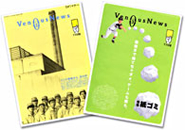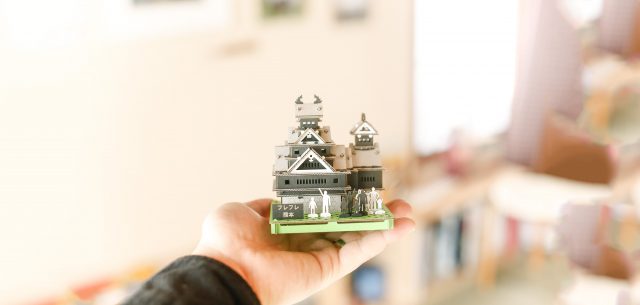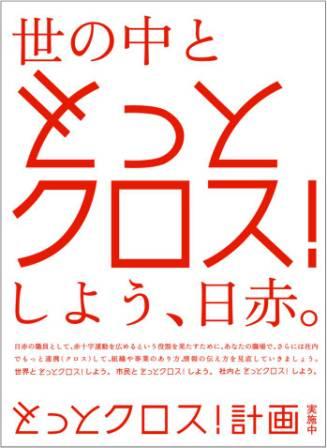
- Expertise
Internal Communications
Community Relations
CSV/CSR/SDGs/Diversity & Inclusion
Introduction
The Urayasu City campaign was designed to help reduce household garbage generation and promote waste recycling, as well as to heighten residents’ evaluation of the local administration. In an awareness survey asking; “What city policy has most improved over the past five years?” most residents cited, “the garbage policy promotion.”
Problem
Urayasu, located in Chiba prefecture, borders Tokyo’s eastern flank and once a small fishing village, is today most famously known as the site of the Tokyo Disneyland complex. The city grew as a Tokyo commuter suburb from the 1960s as a consequence of Tokyo’s rapid economic development.
By  1990, Urayasu’s population had increased sevenfold and the volume of household garbage generated had surged 1.5 times from 1986 levels. Finding a way of cutting the swelling volumes of garbage became imperative for the city government.
1990, Urayasu’s population had increased sevenfold and the volume of household garbage generated had surged 1.5 times from 1986 levels. Finding a way of cutting the swelling volumes of garbage became imperative for the city government.
Encouraging residents to recycle and reuse would curb the growth in garbage, but resources conservation and environmental protection were largely distant issues to most urban Japanese at that time. Moreover, 70 percent of Urayasu’s population had moved to the city from elsewhere in Japan and the majority of residents felt no special sense of community or attachment to the city.
The opportunity existed for a PR campaign targeted at homemakers and children to raise public consciousness about household waste. The program was dubbed the “Venous Plan,” derived from a recycling term used in Japan that equates the complex system of recycling products from consumers to manufacturers with the human body’s circulation system.
Research
PR Consulting Dentsu conducted an initial survey to determine what Urayasu and other cities across Japan were doing to reduce household garbage generation.
In partnership with Urayasu city government’s Environmental Issue Division, we organized the first meeting of the Urayasu City Garbage Reduction Measures Review Panel (the ‘Venous Committee’), a ten-member group comprised of representatives from the city government, citizens’ associations, local businesses including Tokyo Disneyland operator Oriental Land, and academics.
The committee decided to begin campaign activities immediately and then take a subsequent sounding of residents’ views on progress. Later we compiled and produced a questionnaire delivered to all households that sought residents’ views of garbage services.
Planning
City officials and PR Consulting Dentsu concluded that rather than reducing the volume of garbage, if growth in the volume of garbage generated could be maintained at the same level as the number of people applying for residence permits, the campaign would be deemed a success.
At the launch of the campaign, Urayasu’s population was only about 112,000, too small for a conventional media relations campaign to be effective. A multi-facetted program was devised making use of the city government’s residents’ listing to facilitate direct mailings. Mailbox drops would also be used to disseminate information about the Venous Plan, together with inserts in daily newspapers (94% of newspapers are home-delivered in Japan). Schools, parents and citizens associations and other community groups would also be recruited as communication vehicles.
Target audience
Research showed that responsibility for sorting and taking garbage to neighborhood collection points mostly fell to the woman of the household so women homemakers became the primary communication target. Young schoolchildren were the secondary target, not only because they would inherit the mantle of environmental protection but also because research showed they could be persuaded to take an active interest and could influence the actions of their parents.
Strategy
Key elements
•Campaign visuals:Images traditionally used by local communities in Japan to encourage respect for nature – such as posters depicting pristine forests and rolling hills – were rejected as inadequate for communicating the garbage crisis Urayasu faced. The campaign symbol developed by PR Consulting Dentsu consisted of a stylized hand holding a yellow ‘warning’ card to resemble the actions of referees cautioning players in sports such as soccer and volleyball (a government-encouraged sport popular among women homemakers in Japan). This ‘warning’, appearing on all campaign materials including posters, newspaper ads and mail shots, was chosen to remind citizens that Urayasu has been cautioned about the volume of garbage it was generating.
 •Campaign for kids:The Japanese love of animation and animated characters suggested to PR Consulting Dentsu that cartoon campaign characters should be adopted to help involve young children. In cooperation with local schools, we helped organize a competition where budding cartoonists submitted designs for a campaign character. The winning entry, “Kurun-chan”, (the name derived from words meaning wrapping, clean and recycling) features a character whose head is depicted as a neatly tied plastic shopping bag recycled to contain garbage. PR Consulting Dentsu then created “Glun-chan”, (the ‘G’ connoting ‘gomi’ or garbage, in Japanese) as an unsavory character. The characters were an immediate hit with Urayasu kids.
•Campaign for kids:The Japanese love of animation and animated characters suggested to PR Consulting Dentsu that cartoon campaign characters should be adopted to help involve young children. In cooperation with local schools, we helped organize a competition where budding cartoonists submitted designs for a campaign character. The winning entry, “Kurun-chan”, (the name derived from words meaning wrapping, clean and recycling) features a character whose head is depicted as a neatly tied plastic shopping bag recycled to contain garbage. PR Consulting Dentsu then created “Glun-chan”, (the ‘G’ connoting ‘gomi’ or garbage, in Japanese) as an unsavory character. The characters were an immediate hit with Urayasu kids.•Garbage study tours:PR Consulting Dentsu decided the commissioning of Urayasu’s household garbage incineration facility – the city’s state-of-art Clean Center – in April 1995 provided scope for a powerful educational experience for residents, especially children and their mothers. Working with the city government, we created a tour-program for the facility, complete with lectures and seminars, audio-
visual presentations and activities to help persuade visitors of the need to lower the volume of garbage they generate.
Highlights
- • PR Consulting Dentsu and Urayasu local government authorities have succeeded in reducing the volume of garbage requiring collection by 10.3 percent per resident.
- • A Citizens’ Attitude Survey conducted by an independent auditor in 2001 found that the “Promotion of garbage policy” was the city policy that had “improved the most” compared with five years earlier.
- • Urayasu City’s success at reducing household garbage was adopted as a 16-page case study in social studies textbooks issued in 2002 for elementary schools throughout Japan with the approval of the Ministry of Education, Culture, Sports, Science, and Technology.
- • Local governments across Japan are approaching Urayasu City and PR Consulting Dentsu for help in solving their household garbage problems.



